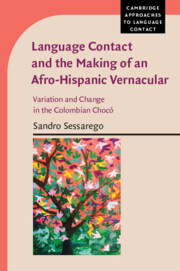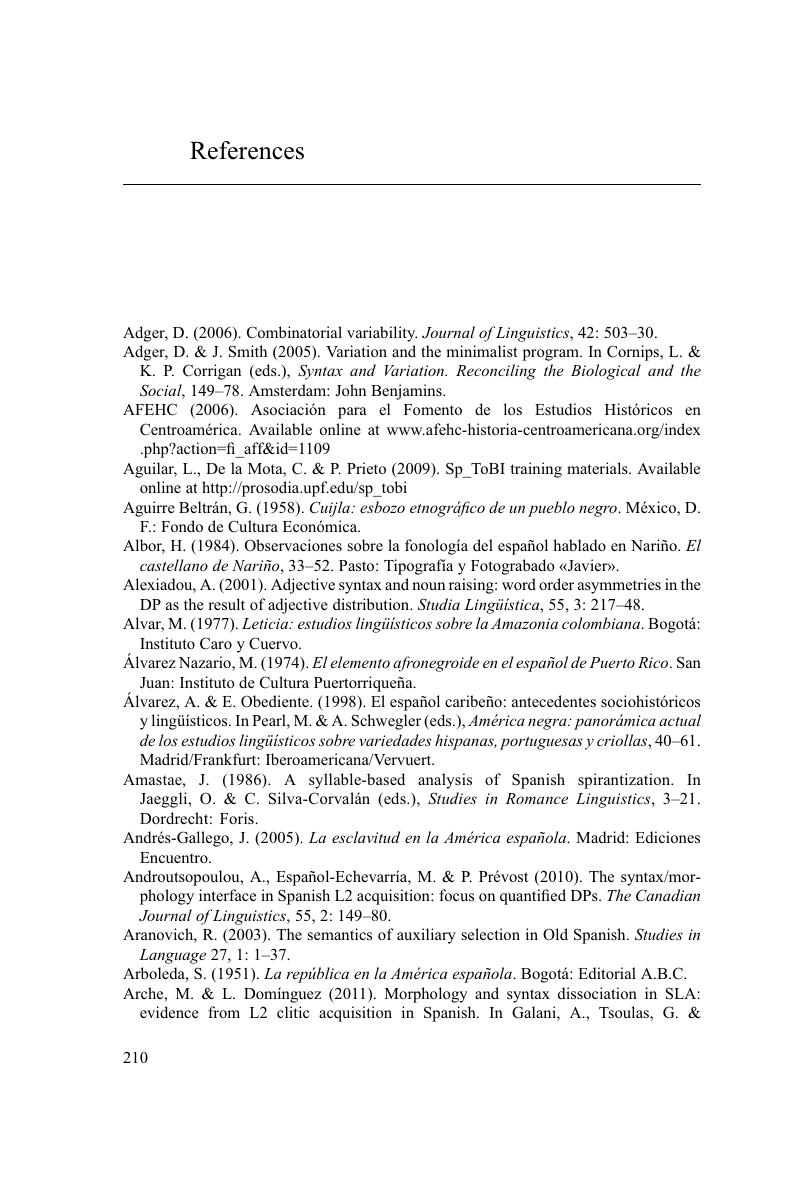 Language Contact and the Making of an Afro-Hispanic Vernacular
Language Contact and the Making of an Afro-Hispanic Vernacular Book contents
- Language Contact and the Making of an Afro-Hispanic Vernacular
- Cambridge Approaches to Language Contact
- Language Contact and the Making of an Afro-Hispanic Vernacular
- Copyright page
- Dedication
- Contents
- Figures
- Tables
- Maps
- Series Editor’s Foreword
- Acknowledgments
- 1 Introduction
- 2 The Place of Chocó Spanish in the Spanish Creole Debate
- 3 A Sketch of Chocó Spanish
- 4 Roots of Some Languages
- 5 Black Slavery in the Pacific Lowlands of Colombia
- 6 Testing the Legal Hypothesis of Creole Genesis on Colonial Chocó
- 7 Final Considerations
- Appendix
- References
- Index
- References
References
Published online by Cambridge University Press: 23 August 2019
- Language Contact and the Making of an Afro-Hispanic Vernacular
- Cambridge Approaches to Language Contact
- Language Contact and the Making of an Afro-Hispanic Vernacular
- Copyright page
- Dedication
- Contents
- Figures
- Tables
- Maps
- Series Editor’s Foreword
- Acknowledgments
- 1 Introduction
- 2 The Place of Chocó Spanish in the Spanish Creole Debate
- 3 A Sketch of Chocó Spanish
- 4 Roots of Some Languages
- 5 Black Slavery in the Pacific Lowlands of Colombia
- 6 Testing the Legal Hypothesis of Creole Genesis on Colonial Chocó
- 7 Final Considerations
- Appendix
- References
- Index
- References
Summary

- Type
- Chapter
- Information
- Language Contact and the Making of an Afro-Hispanic VernacularVariation and Change in the Colombian Chocó, pp. 210 - 228Publisher: Cambridge University PressPrint publication year: 2019


